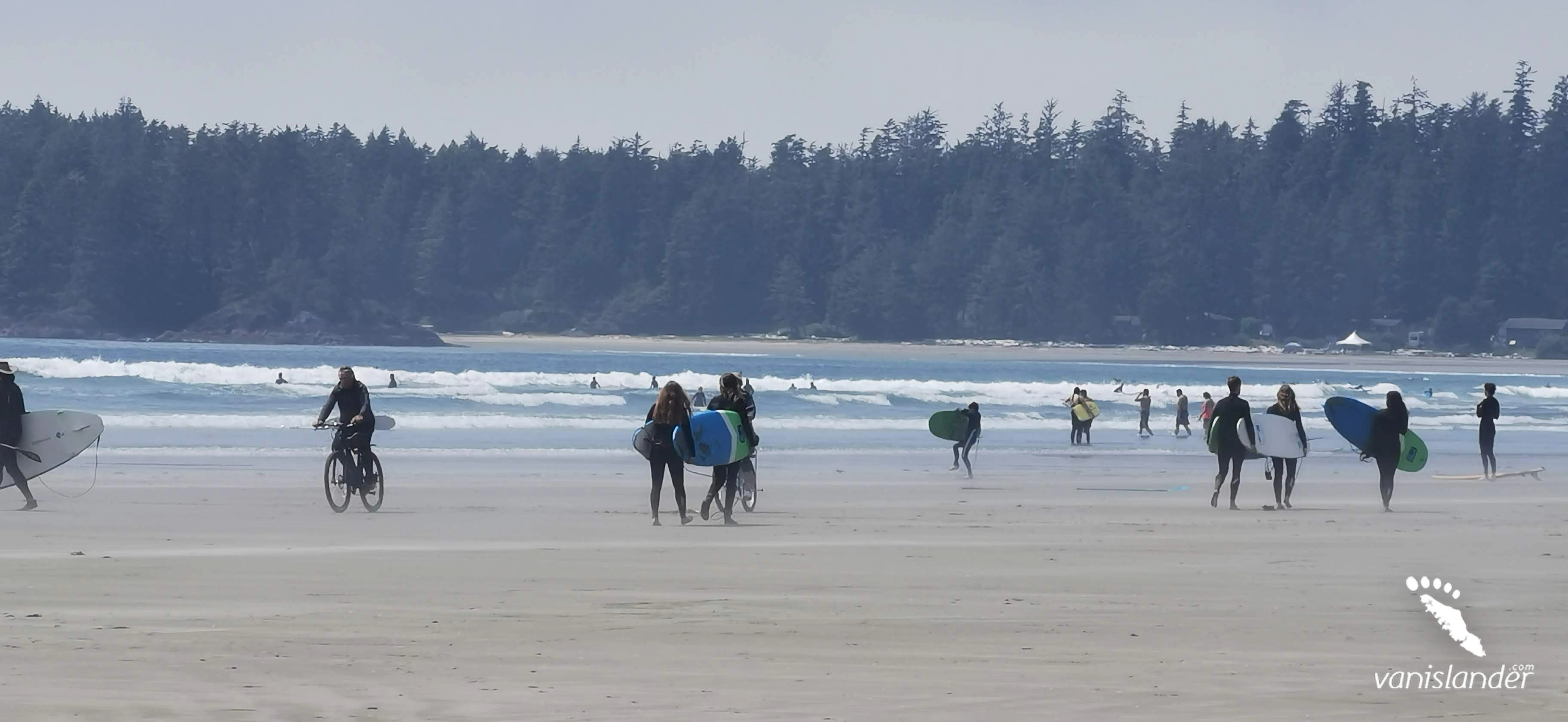Where to Ride: Vancouver Island’s Regions
North Island (Campbell River & Mt. Washington): In the north, Campbell River is your gateway. The Snowden Demonstration Forest near town boasts over 100 km of trails through lush coastal rainforest . Think smooth, flowy singletrack one moment and technical slabby drops the next. One seasoned rider notes that Snowden’s mossy trails are best enjoyed on a hardtail with a dropper post– though full-suspension enduro bikes cruise these lines too. Nearby Beaver Lodge Lands offers family-friendly loops and gentle climbs, while deeper into Strathcona Park the Forbidden Plateau (Mt. Washington) region delivers high-alpine dh classics: steep shuttle runs dropping to the ocean. (The Pt. at Nymph Falls doubles as a scenic bike-swim spot.)
Caution: Forbidden Plateau is largely unsanctioned and has active logging, so watch for truck traffic and trail warnings . In fact, riders should always obey posted closures and stay on open trails.
Comox Valley / Cumberland: Nestled west of Campbell River, the Comox Valley (Courtenay, Comox, Cumberland) is often called the “unofficial epicentre of Island riding” . From downtown Cumberland you can pedal straight onto 226 km of legendary singletrack . The trails here run the gamut: Blue Collar and New Vanilla are fast, bermed flow trails; Thirsty Beaver has wood features; Queso Grande is a long technical climb-and-descent . Jump enthusiasts flock to Six Pack (a freeride park with gap jumps), while up in the hills you’ll find steep rocky chutes. A rider praises Cumberland’s clear signage and trail maps – it’s surprisingly easy to navigate solo and find your way to trails. Difficulty: Comox/Cumberland has something for everyone, but shines for intermediate-to-expert riders. Of 226 trails, most are green/intermediate (102) or difficult (93), with a few black-diamond lines (14 extra-difficult) . For after-ride brews and gear, Cumberland village and nearby Courtenay have bike shops and cafes right on the trail grid, so you can wash your bike (there’s even a bike wash at the Mt. Tzouhalem trailhead!) and grab a local beer within minutes of finishing.
Nanaimo / Mt. Benson & Central Island: Just south of Courtenay, the Nanaimo area is another hub. It boasts 393 trails ranging from beginner cruises to advanced jumps . Flow-seekers head for Westwood Lake’s Finer China trail – a wide, swoopy singletrack through dry forests – or the Stevie Smith bike park (pump tracks and freeride features on Mt. Benson) . Mt. Benson also offers steep black trails like Sexy Flanders. Farther inland, the Cowichan Valley (near Duncan) has 170 trails on Mount Prevost, Tzouhalem, Maple Mountain and Cobble Hill . Mount Prevost is known for double-black pro lines, so only attempt it if you’re fearless . By contrast, Cobble Hill has gentler beginner-to-intermediate trails (perfect for learning) . Don’t miss Mt. Tzouhalem’s Double D downhill – a stoked local says it’s a must-ride drop. Cowichan’s trails reward the uphill grunt with rocky descents and bay views; afterward grab some local craft cider or tour the vineyards!
Greater Victoria / Langford & Capital Region:
The south end around Victoria is built-up but the riding is still great. Langford’s parks (Jubilee and Mt. Finlayson) are a gravity-lover’s playground: you’ll find jumps, steep berms and a famous bike park named for Jordie Lunn . Dozens of downhill runs snake off these hills. Victoria proper has Hartland MTB Park on the Galloping Goose (a dense network of tech XC trails) and the new Bear Mountain trails on Mt. Doug Road. If you’re after the island’s hardest lines, Bear Mountain’s Beer Run (single-black, steep rock rolls) and No Malarkey are legendary – definitely pad up for these!. (Local tip: these trails were built by a community effort and are kept up via volunteer trail days.) Both Langford and Victoria are year-round rideable – snow is rare here – but plan for mud after heavy rains. Seasonal campgrounds and ferries make it easy to explore the whole south Island on a multi-day road/mountain trip.
Parksville/Qualicum & Sooke (Mid-Island Coasts): On the east-central coast, Parksville/Qualicum Beach is known for the Hammerfest trail network. Here green cruisers sit alongside double-black jump lines: one tourism page says Parksville offers “big adventure… from mellow greens to double-black jump lines”. Climbing rewards you with ocean vistas over the Strait of Georgia; descending takes you through ferny second-growth woods. Nearby Mt. Arrowsmith (Parksville) has more cross-country and gravity trails under development. On the west coast, Sooke surprises many visitors. With the Pacific at your back and coastal rainforests around, it rarely snows in winter, so riders enjoy year-round loops . Trails here (like Harbourview) are loamy and rooty; locals describe Sooke’s “craggy, lush west coast” vibe . Harbourview in particular is a famous intermediate cruise used to introduce beginners to Island riding . Beyond that, expect tight singletrack and some steep climbs. Both Parksville and Sooke have tight-knit volunteer clubs (e.g. SnowMAD in Qualicum, Sooke Saddle Club) – keep an eye out for community workdays if you visit!
